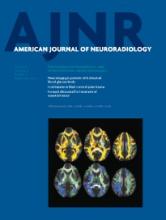The incidence of multiple sclerosis in North America is approximately 5/100,000, and the peak of onset is 30 years of age. Hence, MS is one of the most frequent chronic neurologic diseases and the leading cause of disability in young and middle-aged individuals in the developed world.1 Strategies to prevent, treat, or even cure MS are of the highest interest. Accordingly, the reintroduction of the chronic cerebrospinal venous insufficiency (CCSVI) hypothesis by Zamboni in 20062 has attracted enormous attention. Successive sonography and conventional angiography studies of intracranial, cervical, and thoracic veins in patients have suggested that there is a strong, previously unconsidered relationship between individual pathologic blood flow of extracranial veins and MS.3 Moreover, consecutive publications have suggested that the so-called “liberation procedure” performed by percutaneous transluminal angioplasty in venous stenosis could, by improving individual hemodynamics, influence disease progression and thus offer a completely new approach for the treatment of multiple sclerosis.4
Unfortunately, correlations reported by one research group2⇓–4 were not reproducible by others by using venous sonography5,6 or MR imaging.7,8 This discrepancy has created reasonable doubts regarding the methodology used by Zamboni2 and regarding the pathophysiologic concept of CCSVI.9 2D high-resolution sonography is ideally suited to study blood flow in extra- and intracranial veins.10,11 It is limited due to the 2-dimensionality and operator dependency and requires a high level of experience and an adequate bone window for transcranial Doppler sonography. However, sonography allows a very accurate visualization and quantification of venous blood flow in both a supine or upright position and during free breathing or a Valsalva maneuver. Potential measurement errors can occur due to insufficient visualization of intracranial veins, insufficient angle correction, and compression of the extracranial veins by the sonography probe and are discussed in detail by Valdueza et al.9
MR imaging has the potential to overcome these limitations. However, previous MR venography studies were hampered by their low specificity: Extracranial large veins may collapse with the patient in a supine position and consequently lead to stenosis or occlusions in MR angiography, which is physiologic and only temporary.12,13 In the current issue of the American Journal of Neuroradiology, Schrauben et al14 evaluate the accuracy and reproducibility of blood flow analysis by using MR imaging in both intra- and extracranial veins in 10 healthy volunteers. They used both contrast-enhanced MR angiography and 3D phase-contrast MR imaging with 3D velocity-encoding. The latter technique (phase contrast with vastly undersampled isotropic projection reconstruction [PC-VIPR]) allows a time-resolved measurement of blood flow in vivo and 3D visualization and quantification of blood flow patterns, velocities, and flow. It is similar to another flow-sensitive MR angiography (4D flow MR imaging) that has been successfully applied to study blood flow within intracranial arteries,15 carotid arteries,16 and liver veins,17 but not yet within the veins of the neck and head.
The current study of Schrauben et al14 convincingly shows the feasibility of this MR imaging technique for the assessment of these vessels. It reveals plausible flow patterns that are familiar from sonographic examinations and accurate quantification of blood flow in the transverse sinus. In addition, tests for the “conservation of mass” at the confluence of the sinuses underscore this plausibility by demonstrating that blood flow in the draining proximal right and left transverse sinuses was very similar to blood flow in the supplying superior sagittal and straight sinuses. However, findings were limited if deep cerebral veins were evaluated in repeat MR imaging examinations; this limitation is probably due to the diameter of only ∼2 mm in these vessels. In addition, results of PC-VIPR of the extracranial internal jugular and azygos veins showed strong day-to-day variations. Comparable with a previous MR venography study,12 the accuracy of contrast-enhanced MR angiography of neck and thoracic veins in the study of Schrauben et al was low. Accordingly, the impact of MR angiography seems to be limited for the assessment of extracranial veins.
However, the strength of flow-sensitive MR angiography is the ability to evaluate blood flow in intracranial large and small veins. MR imaging provides the unique advantage of visualizing and quantifying blood flow in the superior sagittal sinus and in the superficial bridging veins that are hardly or not at all assessable by sonography due to the lack of a sufficient bone window.10 Accordingly, little is known about physiologic flow or about pathologic changes at these sites in patients with acute brain edema, traumatic brain injury, sinus thrombosis, or idiopathic intracranial hypertension. A comparison with sonography in reliably accessible vessels such as the transverse sinus10 or with high-resolution 2D phase-conventional angiography8 as the reference method is a prerequisite before this MR imaging technique can be used in trials or in clinical routine. In particular, accurate quantification of blood flow in small cerebral veins (ie, straight sinus, internal cerebral veins, basal veins, and the vein of Galen) is challenging and requires a spatial resolution of <0.25 mm3.
At present, to our knowledge, there is no evidence from high-level randomized controlled trials (RCTs) that has proved the value and safety of percutaneous transluminal venous angioplasty for the treatment of multiple sclerosis.18 Patients with multiple sclerosis are typically young and closely follow new developments in diagnosis and treatment. Many are very open to undergoing experimental therapies to prevent further progression of disability, even if the efficacy has not yet been proved and if they potentially expose themselves to serious adverse effects. Due to the recent experience from several promising trials that have finally failed to show a benefit of interventional compared with medical treatment,19⇓–21 patients with multiple sclerosis should not be treated by venous angioplasty unless the 6 ongoing RCTs prove a clear benefit.18 Until then, they should consistently receive established (eg, interferons, glatiramer acetate) or newer and more potent drugs (eg, natalizumab, fingolimod, fumaric acid) that have already proved their efficacy and safety in large RCTs.
REFERENCES
- © 2014 by American Journal of Neuroradiology











